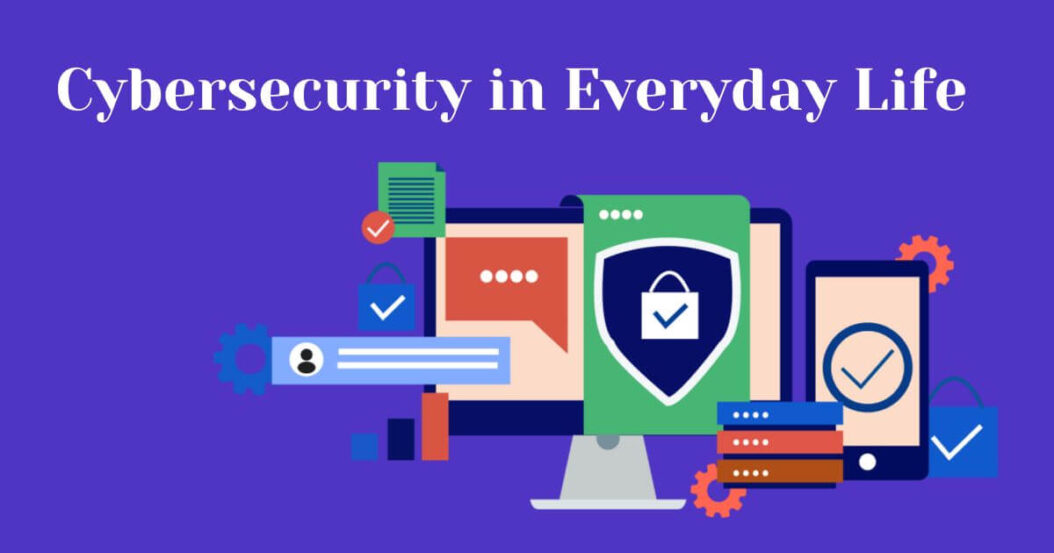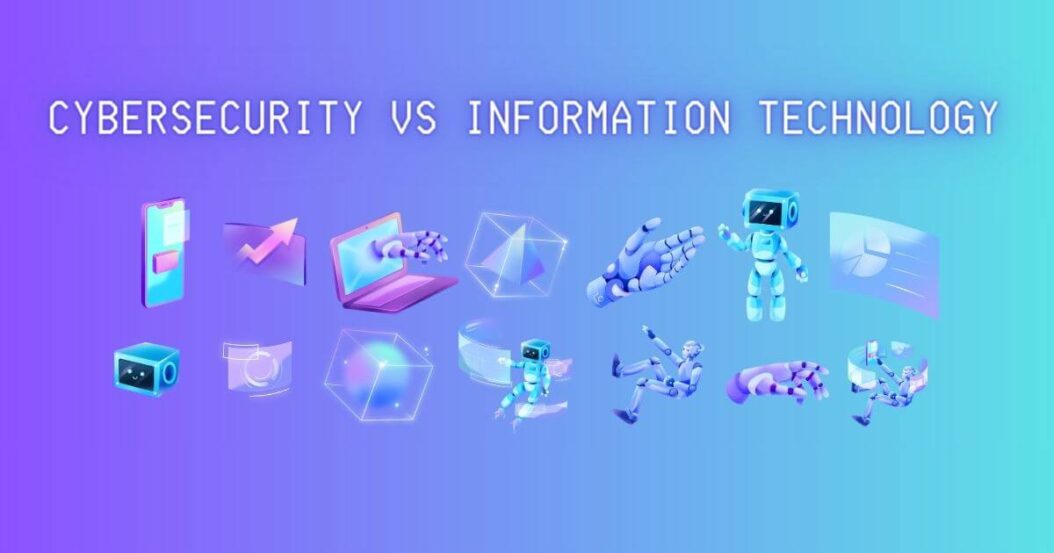Cybersecurity and information technology are related fields that both involve working with computer systems and data networks. However, there are some key differences between the two in terms of their focus and job responsibilities.
What is Cybersecurity?
Cybersecurity is the practice of protecting computer systems, servers, mobile devices, electronic systems, networks and data from unauthorized access, vulnerabilities, attacks and data breaches. The main goal of cybersecurity is to create a safe digital space where people and organizations can use technology without the risk of cyber threats like hacking, malware or data leaks.
Some key responsibilities of cybersecurity professionals include:
- Developing security policies and procedures
- Assessing systems and networks for vulnerabilities
- Installing firewalls, anti-virus software and other protections
- Monitoring networks for security breaches and intrusions
- Responding to and investigating cyber attacks or data breaches
- Training employees on security best practices
Cybersecurity in Everyday Life

1. Password Management:
- Everyday cybersecurity involves creating strong, unique passwords for various accounts.
- Example: Using a password manager to generate and store complex passwords for online banking, email, and social media accounts.
2. Two-Factor Authentication (2FA):
- Adding an extra layer of security beyond passwords.
- Example: Receiving a code on your mobile device to verify your identity when logging into an online service.
3. Updating Software and Apps:
- Regularly updating operating systems and applications to patch security vulnerabilities.
- Example: Promptly installing updates on your smartphone or computer to ensure you have the latest security patches.
4. Phishing Awareness:
- Being cautious about email and message links to avoid falling for phishing scams.
- Example: Verifying the legitimacy of an email before clicking on any links or providing personal information.
5. Secure Wi-Fi Practices:
- Using strong encryption and passwords for home Wi-Fi networks.
- Example: Setting up WPA3 encryption and a robust password for your home Wi-Fi to prevent unauthorized access.
6. Privacy Settings on Social Media:
- Managing privacy settings to control the information visible to the public.
- Example: Adjusting Facebook or Instagram privacy settings to limit who can see your personal details and posts.
Overview of Information Technology
Information technology (IT) is focused much more broadly on the use of technology, especially computers and networks, to store, retrieve, transmit and manipulate data. IT professionals enable organizations to effectively use technology to support operations and business goals.
Typical information technology responsibilities include:
- Installing and configuring computer systems, networks and hardware
- Managing databases and data storage systems
- Helping employees with software or tech issues
- Maintaining networks, servers and other IT infrastructure
- Developing and supporting websites or applications
- Training staff on using new technologies
Key Differences and Similarities
While cybersecurity and IT can seem quite similar on the surface, there are some notable ways that these two fields diverge.
| Aspect | Cybersecurity | Information Technology (IT) |
|---|---|---|
| Focus | Security against threats. | Technology for business needs. |
| Goal | Protect info integrity, availability. | Enhance business process efficiency. |
| Scope | Security measures, threat detection. | Broad: hardware, software, networks. |
| Responsibilities | Pen testing, firewall, malware. | Network admin, sys maintenance. |
| Skill Set | Ethical hacking, security protocols. | Varied: programming, admin, etc. |
| Components | Network, app, endpoint security. | Hardware, software, networks. |
| Career Paths | Analyst, Hacker, Consultant. | Admin, Analyst, Developer, Manager. |
| Certifications | CISSP, CEH. | CompTIA, Cisco, etc. |
| Challenges | Evolving threats, skill shortage. | Tech changes, user needs. |
| Compliance | Data protection, privacy laws. | Industry-specific regulations. |
| Collaboration | Close with IT for security. | Collaborate across departments. |
| Tools | IDS/IPS, firewall, antivirus. | Servers, routers, OS, databases. |
Relationship between Cybersecurity and Information Technology
The relationship between Cybersecurity and IT is symbiotic. IT provides the infrastructure, and Cybersecurity ensures its protection. Understanding how these elements interconnect is crucial for implementing effective security measures.
How IT infrastructure impacts Cybersecurity?
The quality and resilience of IT infrastructure directly impact the effectiveness of Cybersecurity measures. A strong IT foundation enhances the ability to detect and prevent cyber threats.
Goals and Priorities
The main goal of cybersecurity is to protect systems, networks and data from threats. The top priority is identifying risks and building strong defenses.
In contrast, the purpose of information technology is to ensure that computer systems and networks effectively support business operations. The priority is on availability, functionality and enabling workflows – not building barriers against threats.
Mindsets and Perspectives
Cybersecurity professionals bring a vigilant mindset focused on defenses and risk mitigation. There is more emphasis on restrictions, monitoring, policies and user access controls.
IT specialists prioritize openness, collaboration and accessibility. The mindset tends to be more creative, exploratory and focused on innovation. There is generally more freedom for users to utilize systems to enhance workflows and productivity.
Skill Sets and Expertise
There are some overlapping technical skills like network administration, systems infrastructure knowledge and programming aptitudes.
However, cybersecurity requires specialized expertise in areas like threat intelligence, penetration testing, digital forensics, vulnerability assessments and security frameworks/standards.
IT professionals need a broader and deeper understanding of databases, cloud platforms, software development, project management, business analysis and communication skills.
Cybersecurity Roles and Career Paths
There are a wide variety of cybersecurity roles available, allowing professionals to specialize in certain areas of interest. Some of the most common positions include:
Cybersecurity Analyst
- Monitors networks for security incidents
- Investigates, categorizes and reports on cyber threats
- May respond to breaches or engage in penetration testing
Security Architect
- Designs and develops security systems, policies and processes
- Ensures solutions comply with laws, regulations and standards
- Often involved in cloud migrations or new tech implementations
Security Engineer
- Implements and manages security tools and systems
- Performs risk assessments to identify vulnerabilities
- Researches and recommends new security software/hardware
Security Operations Manager
- Leads security teams to protect infrastructure 24/7
- Develops incident response plans and oversees investigations
- Communicates security needs and measures to executives
There are also specialized cybersecurity career paths in fields like application security, network security engineering, or governance/auditing. With additional certifications, professionals can continue advancing into leadership, architect and consulting roles.
Information Technology Job Roles and Career Options
There is immense variety within IT roles as well. Some of the most common positions include:
IT Support Specialist
- Provides technical assistance and troubleshooting to computer users
- Answers questions, resolves issues and installs/configures systems
- Great entry point for those new to the IT industry
Network Administrator
- Responsible for maintaining computer networks and servers
- Installs and configures network components like routers and switches
- Manages network security measures and monitors performance
Software Developer
- Designs, builds and enhances software applications
- Writes and debugs code in languages like Java, Python or C++
- May focus on mobile, web, systems or other development
Database Administrator
- Implements and manages database systems
- Defines data structures, storage requirements and security controls
- Backs up databases, troubleshoots issues and performs upgrades
Advancement opportunities often include senior technician, IT manager and Chief Information Officer (CIO) roles. Many pursue specialties in data, cloud computing, ERP systems or as solution architects.
Should You Pursue Cybersecurity or Information Technology?
Deciding whether to embark on an IT or cybersecurity career path depends on your specific interests, strengths and professional goals.
Cybersecurity Pros
- Working “behind the scenes” safeguarding data appeals to some
- Constantly evolving niche with new innovations and challenges
- Specialists are in extremely high demand in most industries
Potential Downsides
- Can be high stress managing extremely complex threats
- Requires continual training/certifications as threats rapidly evolve
- Most roles support security 24/7, involving shift work
IT Pros
- Allows creativity in enhancing operational efficiency
- Directly impacts end users and business outcomes
- Foundational technology skills apply across industries
Potential Downsides
- Often on call addressing service disruptions
- Continual training needed as software/hardware evolves
- Can get stuck supporting outdated legacy systems
Weigh your individual preferences, talents and career ambitions when deciding between these two dynamic and fast-paced technology fields.
Conclusion
While cybersecurity and IT professionals must collaborate to create safe and highly functional technological environments, these two career paths do involve some distinctly different skills, mindsets and day-to-day responsibilities.
Cybersecurity roles focus directly on vigilant protection of critical systems and data from escalating security threats in today’s digital landscape. IT specialists concentrate more broadly on ensuring that rapidly evolving technologies can be easily leveraged by organizations to enhance operations, productivity and service delivery.
There are abundant opportunities in both of these highly in-demand fields. As technology continues advancing at light speed, cybersecurity and IT professionals with passion, creativity and specialized expertise will be equipped to take on senior leader and pioneering innovator roles.
FAQs
What are the main similarities between cybersecurity and IT careers?
Both involve working closely with advanced computing technologies and require strong analytical, technical and problem-solving skills. Professionals from either background collaborate to enable organizational security and productivity.
What is more lucrative – a cybersecurity or IT career?
Currently cybersecurity roles offer higher average salaries due to huge talent shortages. However, both paths provide the potential for excellent compensation, especially in technical lead or executive positions.
Do cybersecurity and IT professionals need programming skills?
Some programming and scripting is useful for automating tasks or developing in-house tools/applications. Extensive software development skills are more vital for some specialized IT roles.
Can I transition from an IT to cybersecurity career or vice versa?
Yes, it’s quite common to leverage broad technology experience to pivot into a cybersecurity specialization (or vice versa) with some additional training. Many skills crossover between the two fields.
Which career path has better work-life balance?
This depends more on the specific organization and position than the field. But the always-on nature of security and managing outages often demands more after hours work for cybersecurity and IT professionals respectively.

